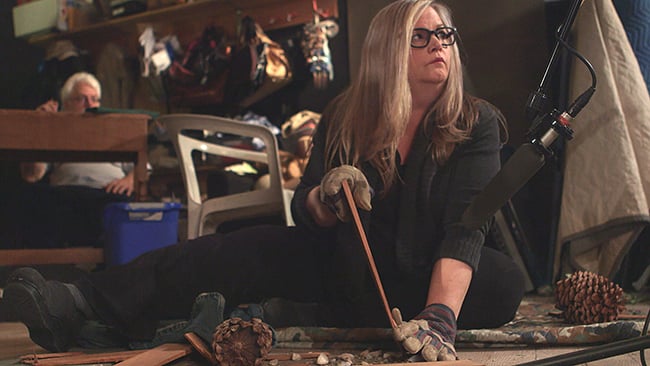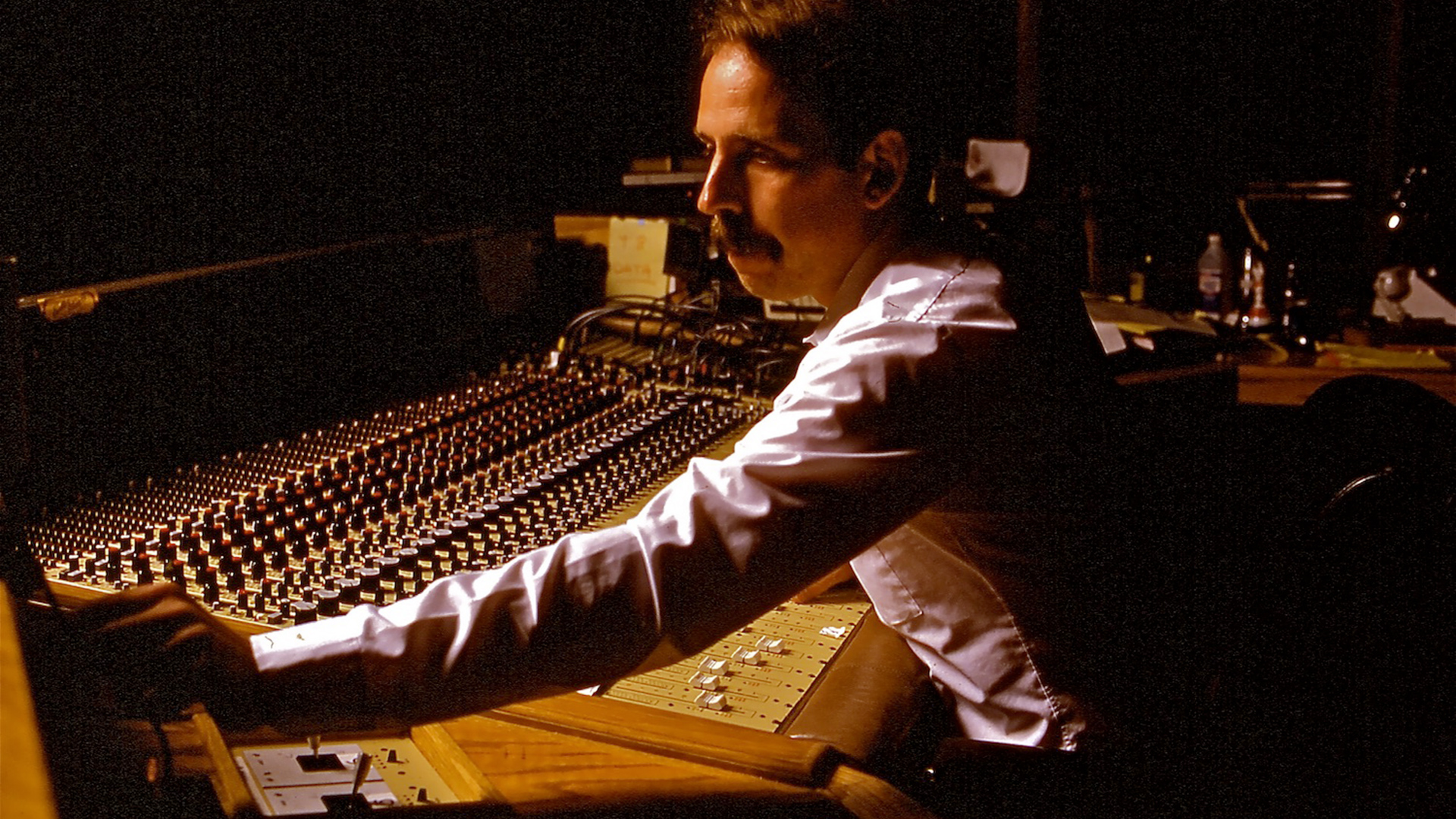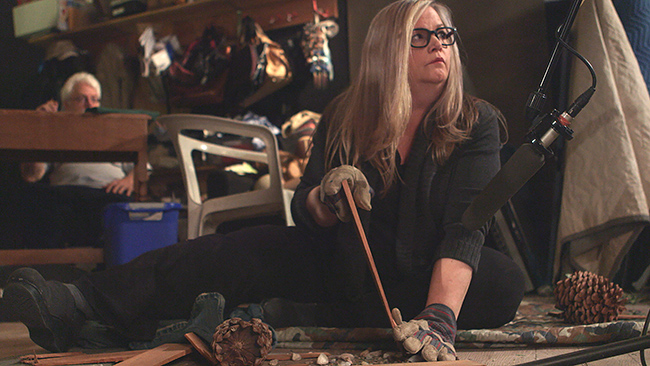

There are many things in life that people don't immediately register unless something is particularly good or particularly bad. Food is one. Most of the time we're used to an average level of cooking, which is why exceptional cuisine or a very poor example of the culinary art leaps off the plate. Sound is similar, although muffled, distorted or badly mixed soundtracks are much more identifiable than either adequate or outstanding audio.
This might explain the long-standing imbalance between sound and vision in films and television, leading to the once oft-heard claim that audio was the "poor relation" to pictures. Other than an extreme reaction to poor quality, matters are not helped by the fact that when people hear good or well crafted sound, they are not always aware of it or able to quantify why it moves them. There is something unquantifiable about audio, a facet summed up well by someone who helped define the role of sound designer, Ben Burtt. "It's an illusionary art," he says in the recently released film Making Waves: The Art of Cinematic Sound. "It's a subliminal, purely emotional way of thinking about a movie."
Burtt has won the Academy Award for Best Sound Editing three times - Raiders of the Lost Ark (1981), E.T. the Extraterrestrial (1982) and Indiana Jones and the Last Crusade (1989) - and been nominated on three other occasions. The Oscars first recognised audio in 1929-30, two years after the release of The Jazz Singer (1927), the first film to feature some dialogue (famously "You ain't heard nothin' yet!") as well as music and effects. That first award - for Best Sound Mixing, a category that covers both location sound and re-recording - went to prison flick The Big House (1930).
Mixing is only one aspect of the film - and TV - soundtrack creation process. The other side, editing, did not receive an Oscar until 1963's madcap caper comedy It's a Mad, Mad, Mad, Mad World, when the Award was specifically for Sound Effects. This changed to Sound Effects Editing in 1977, skipped a year in 78, briefly became Sound Editing in 79 before reverting to its second title from 81 to 99. Since 2000 the statuette has been for Best Sound Editing again.

Creating foley, a shot from the documentary Making Waves. Image: Aim Publicity
As film soundtracks have become more multi-layered and the cinema reproduction systems more sophisticated - developing from mono to stereo to surround to today's immersive technology, such as Dolby Atmos - the appreciation of what audio can bring to a movie, both within the industry and by the audience - has grown substantially. This year's Oscar and BAFTA nominations have several crossovers, recognising many films that critics and moviegoers alike have praised for outstanding sound.
These include Le Mans 66, Joker, 1917 and Star Wars: The Rise of Skywalker. In the first major sound-oriented awards of the year, held by AMPS (Association of Motion Picture Sound), it was 1917's aural recreation of the horrors of war - much like Saving Private Ryan (1998, both an Oscar for Sound Editing and BAFTA Best Sound) and Dunkirk (2017, both categories at the Oscars and the BAFTA) before it - that won through. The Sam Mendes film almost swept the board at the recent BAFTAs, including for Best Sound.
While Star Wars: Episode IV A New Hope (1977) is generally regarded as the film that put Dolby Stereo Surround on the cinematic map, the first to exploit the possibilities of the then four-channel technology was the Barbra Streisand version of A Star is Born (1976). Interviewed for Making Waves, Streisand explains that she thought the system would create an enveloping sound for the concert sequences in the film. Apparently Warner Bros was unsure of this new 'toy' and wouldn't increase the budget to cover it. Streisand said she would pay for it herself but in the end the studio loved the result so much it didn't ask her for the $1 million the sound cost.
Insight
Making Waves is full of entertaining and insightful anecdotes like that. Other interviewees include directors George Lucas, Steven Spielberg, David Lynch and Ang Lee and sound designers/editors/recording mixers such as Walter Murch, Gary Rydstrom, Randy Thom, Dane Davis, Victoria Rose Sampson, Bobbi Banks and Skip Lievesay. The film is a balance of history, technology and the pure creative, looking at how sound can support storytelling.
The project was a labour of love for director Midge Costin, who is a sound editor with credits including The Rock (1996), Con Air (1997) and Armageddon (1998). She agrees that trying to get finance for a film about sound was "a very hard sell", which is why a production that originally started in 2002 didn't come to fruition until last year.
Costin acknowledges that Making Waves is not a comprehensive survey of the various technologies that have been used and picks out only the major milestones but says she ultimately wanted to get over how important sound is for not only creating mood and character but also helping drive the plot. While Costin admits that the film is not only US-centric but California-centric, it does de-mystify how a soundtrack is created and gives away a few trade secrets.
It would be a stretch to say that the history of film sound is the history of cinema itself but as Ben Burtt points out in Making Waves, Thomas Edison developed a movie camera to go with his phonograph, realising that the two were connected. But certainly sound has been a major part of the creative and technological progression of film, even in the silent era through live effects and music, and particularly since the early 1970s when Murch, Lucas and Francis Ford Coppola shook up the whole movie business. For that alone it should not be overlooked.
Making Waves: The Art of Cinematic Sound is released on DVD by Dogwoof.
Tags: Audio


Comments